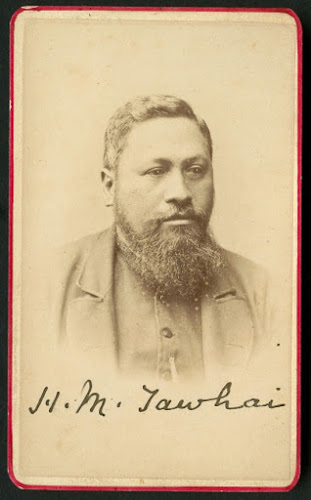Book Review: Lynette Russell, "Roving Mariners: Australian Aboriginal Whalers and Sealers in the Southern Oceans, 1790-1870"
Lynette Russell.
Roving Mariners: Australian Aboriginal Whalers and Sealers in the Southern Oceans, 1790-1870.
Albany: State University of New York Press, 2012. xiv + 221 pp.
$80.00 (cloth), ISBN 978-1-4384-4423-9; $29.95 (paper), ISBN 978-1-4384-4424-6.
Reviewed by Vincent O'Malley (HistoryWorks)
Published on H-Empire (July, 2013)
Commissioned by Charles V. Reed
Published on H-Empire (July, 2013)
Commissioned by Charles V. Reed
The Hybrid World of Whaling and Sealing
The whaling and sealing industries that emerged in
the Pacific and Southern oceans from the late eighteenth century have
attracted significant interest from historians over recent decades. A
particular focus has often been on the relationship between the
whalers/sealers and indigenous groups they encountered and interacted
with on a frequent basis. But that represents something of a false
binary. It has long been known that New Zealand Maori and other
Polynesian and South Pacific communities took an active part in sealing
and whaling work.
Now, thanks to Lynette Russell’s short but impressive
work, we also need to account for significant Australian Aboriginal
engagement with both fields of employment. And the ironic thing is that
the particular Aboriginal communities most heavily involved were among
those usually considered the greatest victims of colonization and
something approaching genocide (or what might be seen as a form of
“ethnic cleansing”).
Russell does not deny the tawdry and tragic history
of European onslaught in Australia. But she does ascribe a form of
“attenuated agency” to those Aboriginal men and women at the heart of
her book. They might not have been free to choose from a range of ideal
options. But they did have some choices. And for some Aborigines, life
in the sealing and whaling communities offered a kind of relief from the
relentless racism otherwise directed at them.
As Russell notes, skin color mattered less in the
multiracial, multilingual world of sealing and whaling than elsewhere.
Competency was what counted, and Aborigines could gain respect and
status that might have eluded them elsewhere. Indeed, profitability and
safety depended upon diverse men (and women) learning to get along with
one another.
Take William Lanné. Erroneously known both in his
lifetime and subsequently as the last Tasmanian Aboriginal male, Lanné
was among a small group of Tasmanian Aborigines to avoid removal to the
Flinders Island Aboriginal settlement, before being captured and taken
there as a seven-year-old with the rest of his family in 1842. Having
been moved to the Oyster Cove settlement, Lanné gained a measure of
financial independence and status when he took up whaling as a young
man, traveling to New Zealand and throughout the Pacific. Lanné’s life
has been overshadowed by his death, and in particular the gruesome
mutilation and dissection of his body that then followed. However,
Russell argues that such a focus ignores the extent to which Lanné was
able, during his lifetime, to assert his autonomy and seek out the
opportunities that colonization offered.
Other Aboriginal men pursued similar opportunities.
Tommy Chaseland, who famously settled in southern New Zealand and
married into the local Maori community, is perhaps the best-known
example. Yet where Russell’s work really impresses is in its efforts to
recover the otherwise largely invisible role of Aboriginal women in the
sealing industry. Conventionally portrayed as the unfortunate victims of
violence at the hands of European men, such women took an active role
in sealing in their own right. Both Aboriginal men and women resisted
and adapted to the newcomers in complex and sometimes subtle ways.
In some respects whaling and sealing proved less
disruptive of Aboriginal ways of life than other forms of European
intrusion. Aboriginal women customarily hunted seals. Meanwhile, ancient
rock art suggests that some Aboriginal communities had been harvesting
beached whales for thousands of years. As Russell points out,
shore-based whaling generated vast amounts of whale meat that was
unpalatable to many Europeans but attracted large numbers of Aborigines
to the fringes of whale stations. In this way, whaling actually helped
to buttress and reinforce customary forms of feasting and exchange. And
Aboriginal men who had spent many years developing their skills with
spears sometimes became highly valued as harpoonists aboard the whaling
ships.
The hybrid world of whaling and sealing was also one
in which the newcomers were often willing to learn from, and even adopt
aspects of the lifestyles of, their hosts. Some Europeans adopted
customary healing practices involving whales, for example, and cultural
influences extended in both directions. Both “native” and “newcomer”
were transformed by their encounters with one another, Russell argues,
and new social forms that drew on both cultures emerged as a result.
Some European sealers were regarded as “worse than savages” or otherwise
considered difficult to distinguish from Aborigines. Conversely,
Chaseland came to be regarded as “civilized.”
Russell succeeds in telling a story beyond the
familiar one of Aboriginal dispossession. Her work serves to highlight
the way in which nineteenth-century racial categories that can all too
often seem fixed and immutable were in some circumstances more slippery
and nuanced. That Australian Aborigines were in general victims of
colonization seems undeniable. But in revealing another side to that
history through the story of Aboriginal engagement with whaling and
sealing, Russell reminds us that the exceptions and complexities of
cross-cultural interaction are also important.
If there is additional discussion of this review, you may access it through the list discussion logs at: http://h-net.msu.edu/cgi-bin/logbrowse.pl.
Citation:
Vincent O'Malley. Review of Russell, Lynette, Roving Mariners: Australian Aboriginal Whalers and Sealers in the Southern Oceans, 1790-1870.
H-Empire, H-Net Reviews.
July, 2013.
URL: http://www.h-net.org/reviews/showrev.php?id=39650
URL: http://www.h-net.org/reviews/showrev.php?id=39650
| This work is licensed under a Creative Commons Attribution-Noncommercial-No Derivative Works 3.0 United States License. |



Comments
Post a Comment